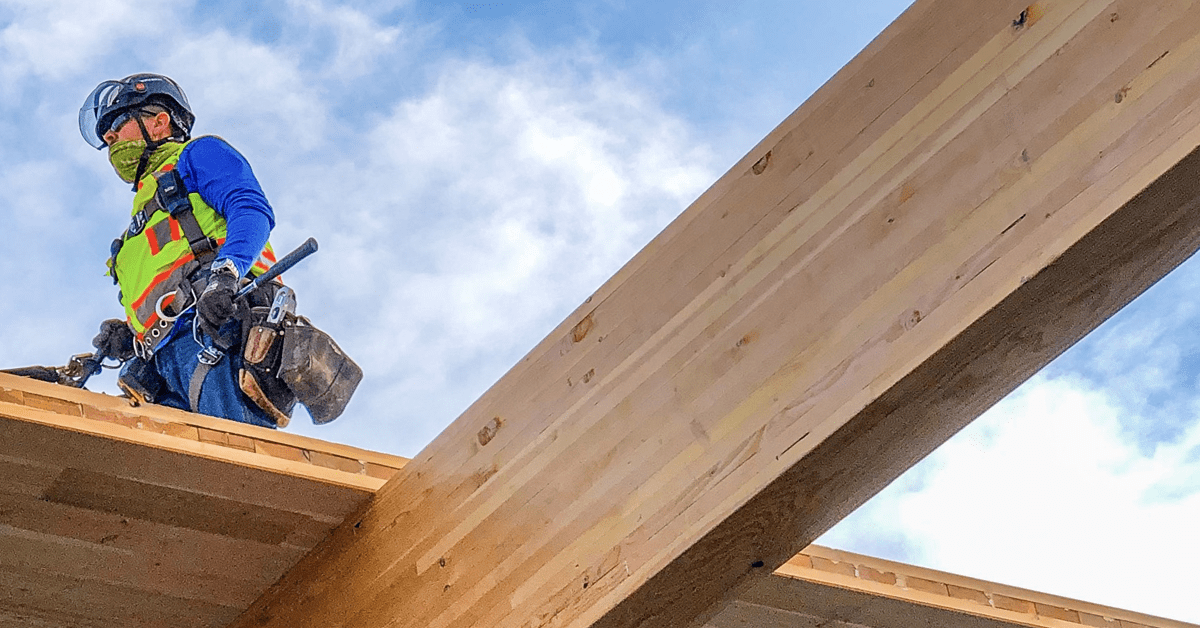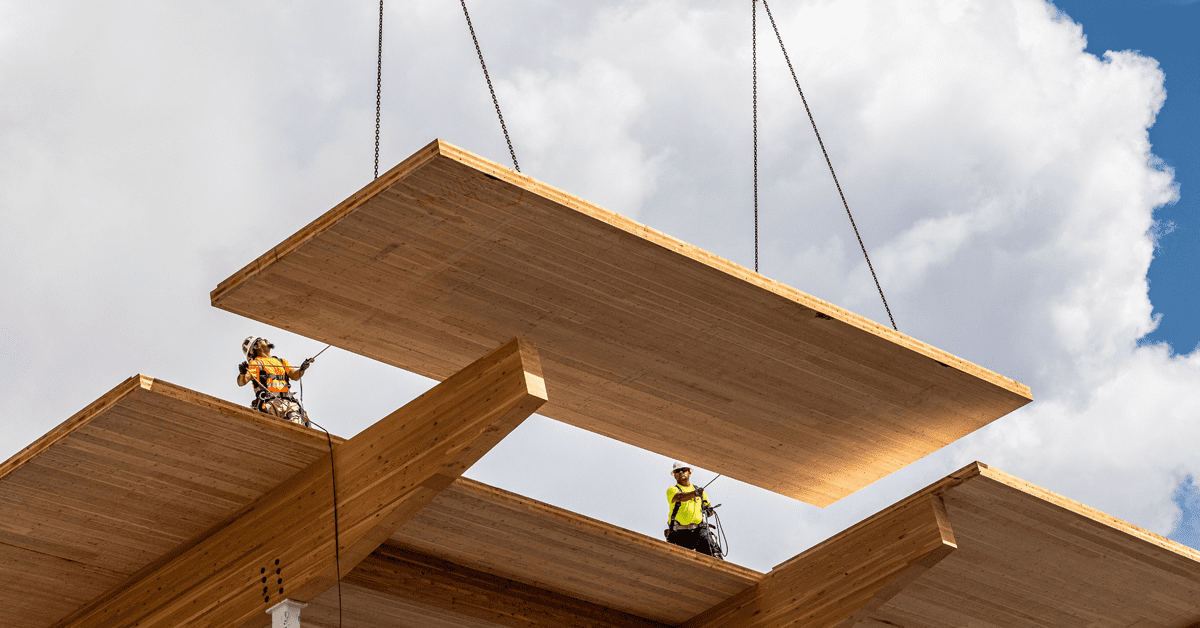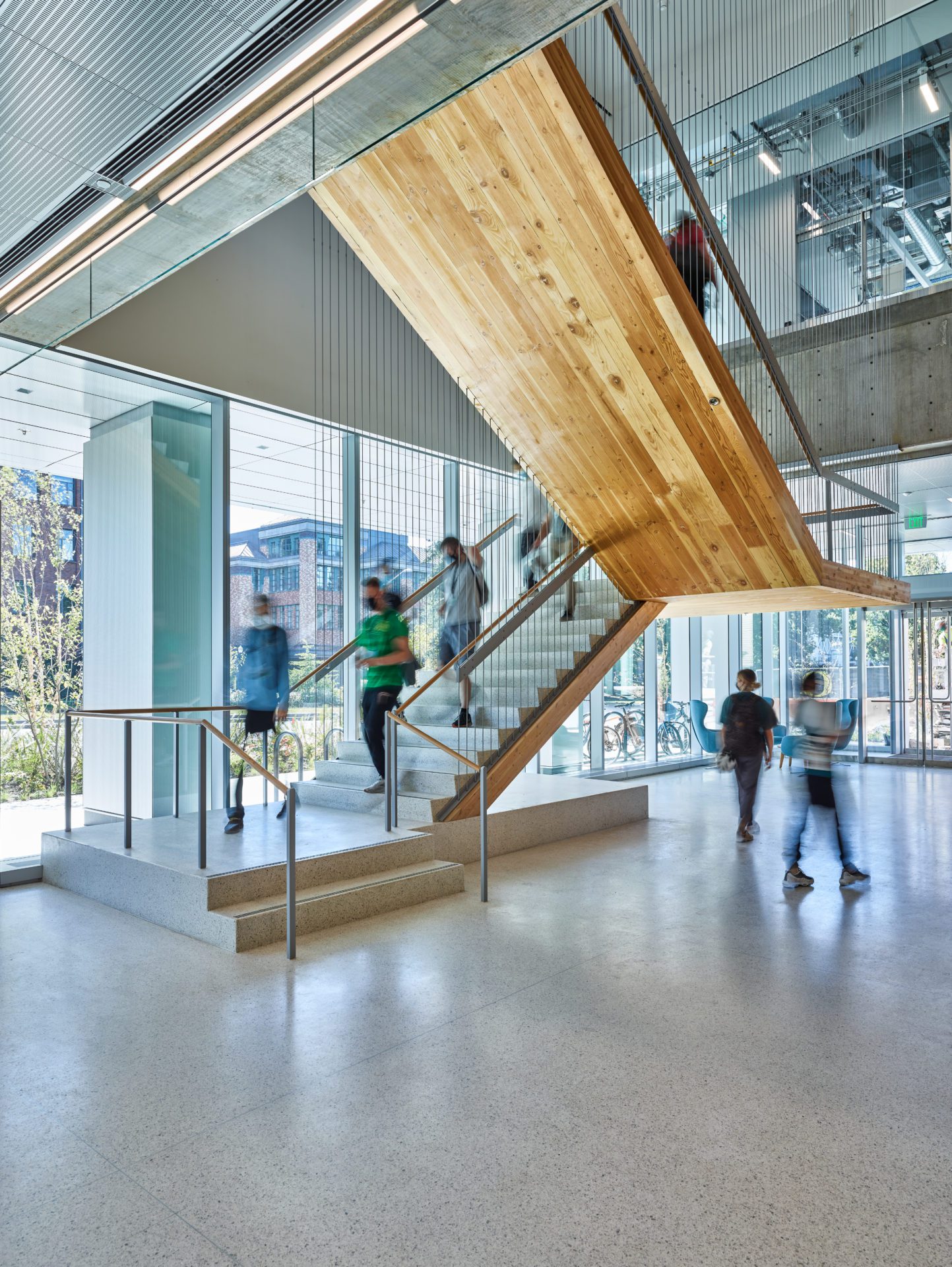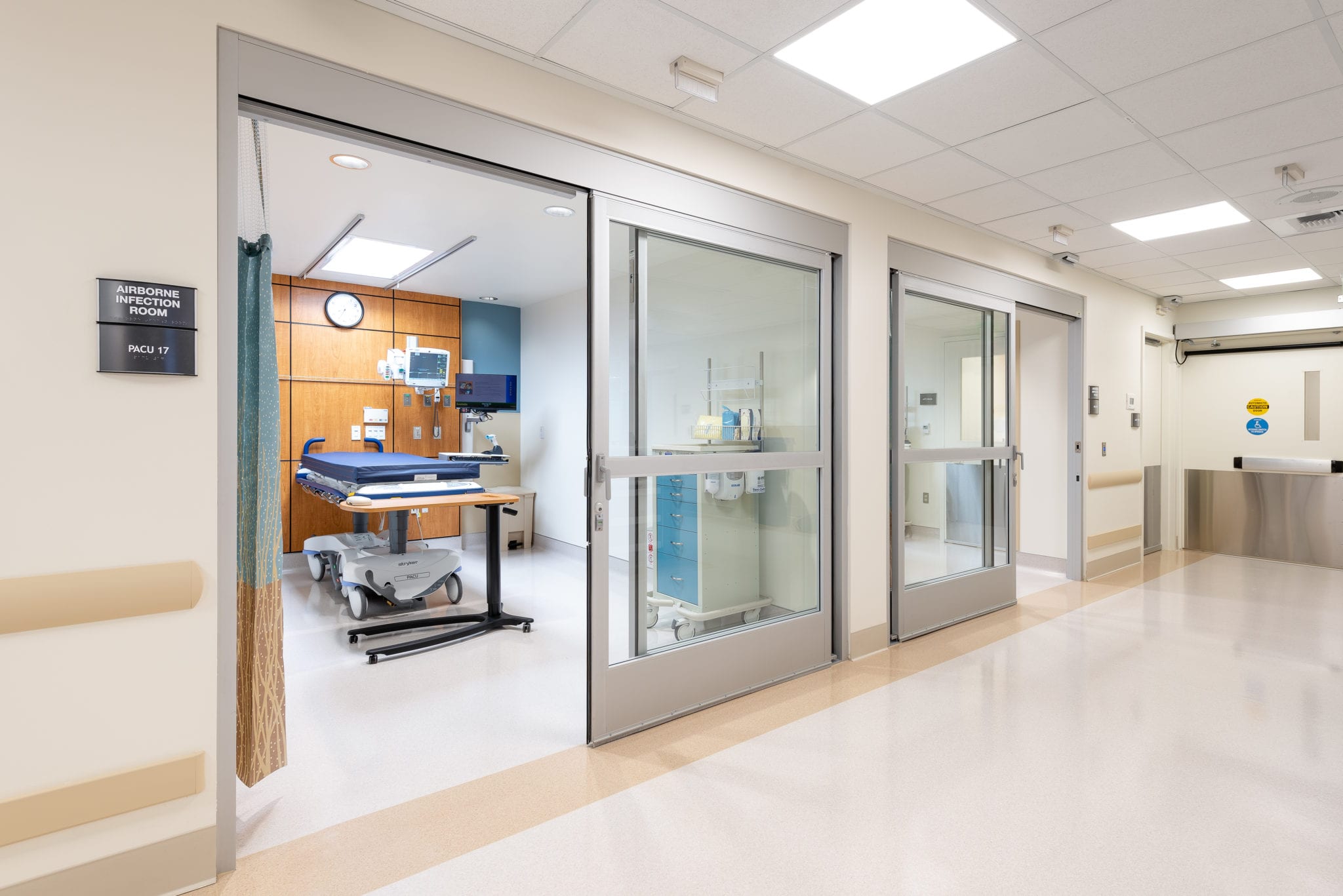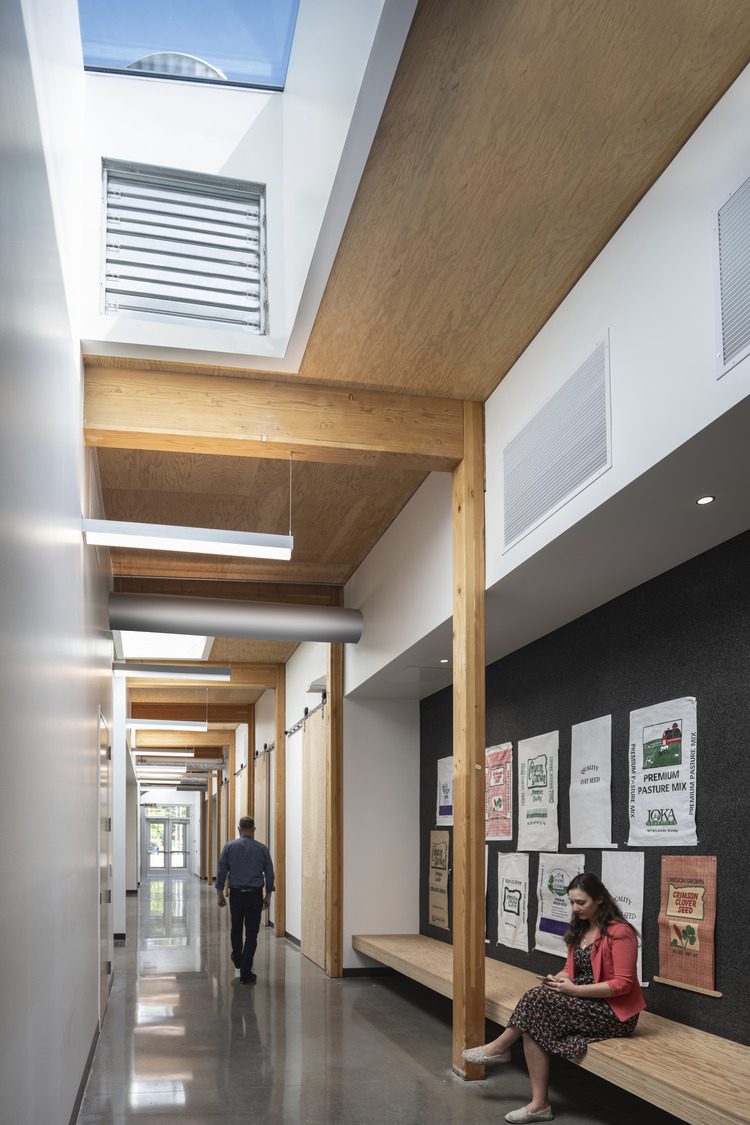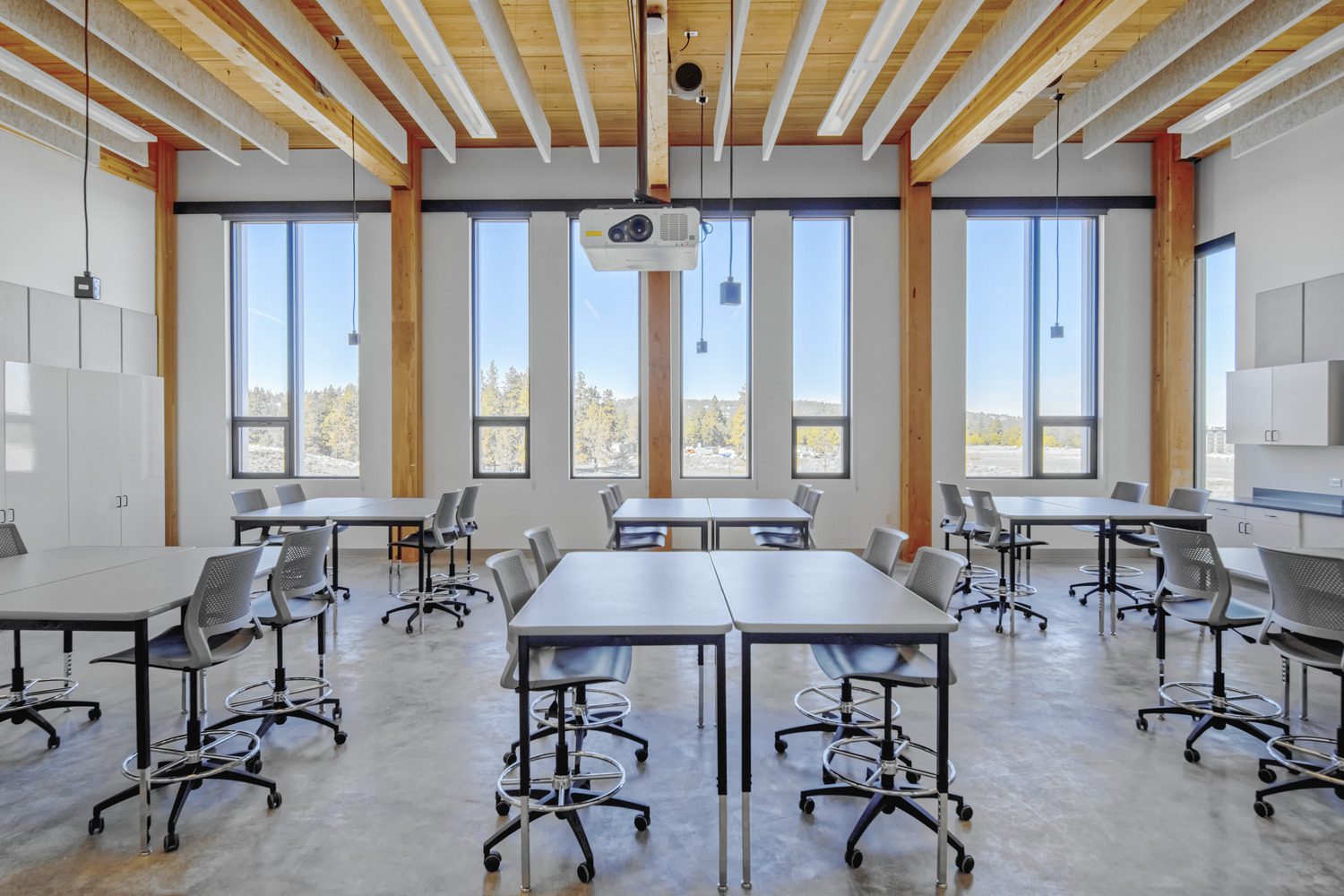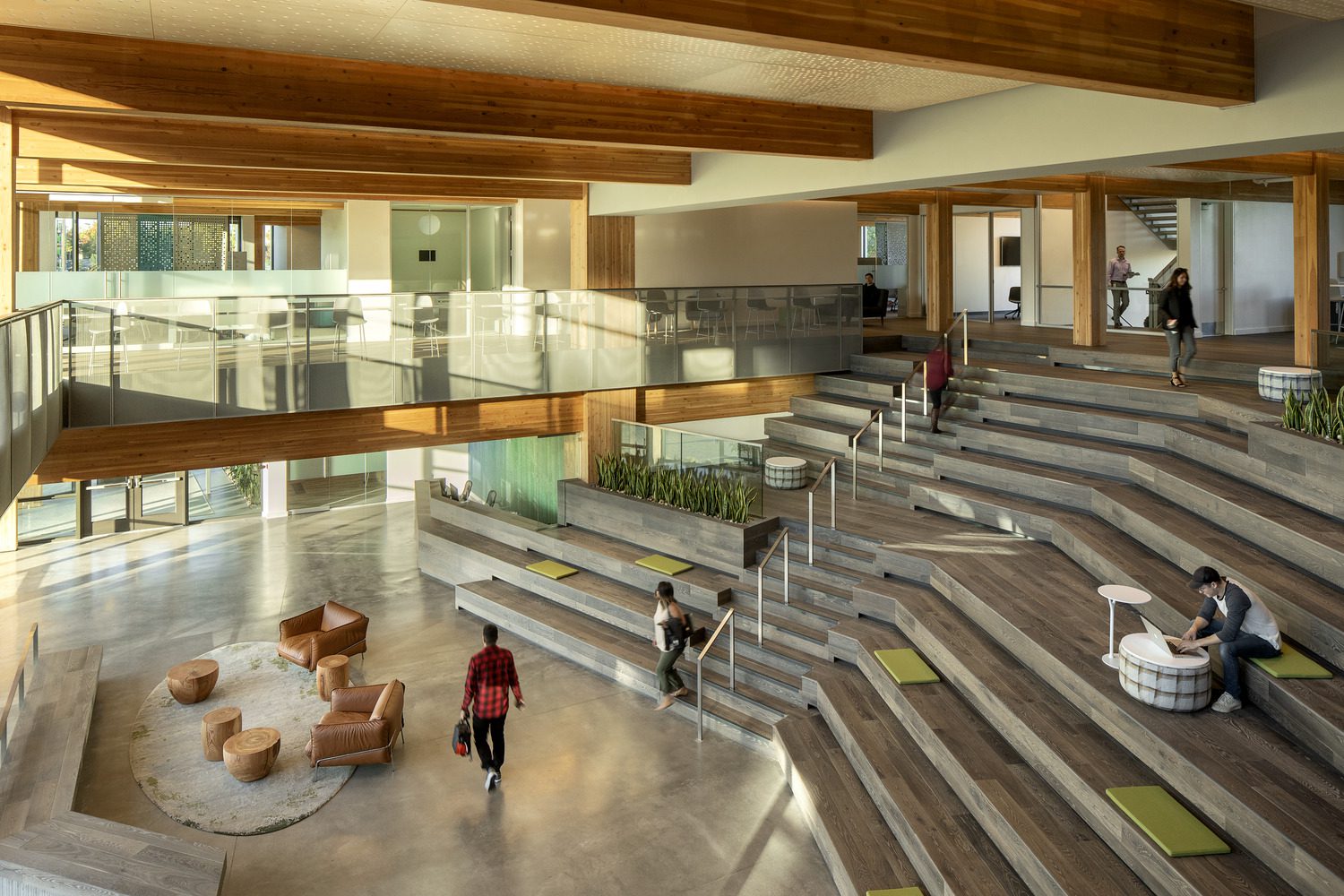WHY MASS TIMBER IS EARNING A PLACE IN HEALTHCARE CONSTRUCTION
HEALTHY BUILDINGS FOR A HEALTHY PLANET:
The use of mass timber in commercial building projects is on the rise. Mass timber was already popular in Europe, which accounts for over 60% of the global market for this innovative construction material, but its adoption is now becoming increasingly widespread across North America. According to the Wood Products Council, nearly 600 commercial building projects featuring mass timber were underway in the United States in 2019; as of March 2022, the number had more than doubled to 1,384.
Mass timber is prized by architects, builders and environmentalists alike. When exposed in building designs, the material’s beauty is immediately apparent. As a structural element, mass timber can meet or even exceed performance standards set for concrete and steel construction. Its most important benefit, however, is its potential contribution as a climate change solution.
While steel and cement manufacturing are among the world’s largest sources of carbon emissions, a mass timber-framed building can serve as a carbon sink throughout its lifetime, sequestering carbon that was absorbed from the atmosphere while the wood was growing in the forest. As long as the building stands, the carbon contained in the wood remains locked in the structure and will not be released into the air.
“Over the last decade, we’ve seen the industry evolve from experimenting with mass timber projects on a small scale to building high-rises out of mass timber in cities,” said Erica Spiritos, vice president and director of preconstruction at Timberlab. “Cross-laminated timber really didn’t come into mass production in North America until 2011. By 2021, the technology was mature enough that we could deliver 19 stories of a 25-story building. Adoption has grown exponentially, in large part because of a sense of urgency about climate action and a belief that mass timber can be part of the solution.”
In large part because of these climate benefits, governments and municipalities across the U.S. and worldwide are establishing policies that promote the use of mass timber in new construction. A recent example is Boston’s Mass Timber Accelerator program, which is piloting the use of mass timber in a series of large-scale construction projects across the city.
At the same time, many jurisdictions are revising building codes to permit the use of mass timber in ways that previously wouldn’t have been considered. These changes have enabled the construction of revolutionary new buildings, such as the Ascent tower in Wisconsin. At 25 stories and 284 feet tall, this residential tower in the heart of Milwaukee’s downtown is poised to become the tallest hybrid mass timber building in the world.
Despite the rapid growth in enthusiasm for mass timber construction across multiple industries, the healthcare sector has been slower to adopt this climate-friendly material. Concerns about medical space planning, infection control, acoustics and vibration suppression — among other issues — have inhibited the healthcare industry’s transition to mass timber structures.
Now, however, this reluctance is fading as new projects — including an ambulatory care center in Sechelt, British Columbia, and a life sciences laboratory and workspace building in Seattle — demonstrate mass timber’s enormous potential to revitalize the construction of healthcare facilities. Besides mass timber’s obvious environmental benefits, its use also is proven to contribute to patient and employee well-being and to bolster the brand reputation of its earliest adopters.
In the months and years to come, it will be increasingly important for leading organizations in the healthcare industry to demonstrate their commitment to the health of the planet and their communities by choosing the building material that best aligns with their mission — with the goal of improving human health.
WHY MASS TIMBER? THE GROWING FOCUS ON SUSTAINABILITY, SOURCING TRANSPARENCY AND ETHICAL BUILDING AND CONSTRUCTION
Among stakeholders in healthcare, as well as a broad array of other industries, there is growing awareness of the climate impact of constructing new buildings and facilities. Researchers estimate that construction projects are responsible for 39% of global carbon emissions. Worldwide, cement and steel manufacturing industries account for nearly 10% of the world’s ongoing carbon emissions, a source of carbon dioxide that’s difficult for societies to eliminate. On average, approximately 2 tons of carbon dioxide are emitted in the manufacture of every ton of steel, though this can be reduced somewhat by incorporating scrap into recycled steel production.
In contrast, trees capture and store carbon as they grow — approximately 1 ton for every cubic meter of growth. By weight, trees are approximately 50% carbon. When trees are harvested, all the carbon that has been sequestered in the wood while they were growing remains there. Once that harvested wood is used in a building, that carbon will stay within that structure for as long as the building stands. In essence, mass timber construction projects transfer sequestered carbon from forests to the built environment. Then new trees are replanted in place of those that were harvested, capturing and storing yet more carbon.
This fact accounts for the environmental promise of mass timber construction. Mass timber is a renewable resource. Plus, it’s possible to store embodied carbon within a building for the whole of the structure’s lifecycle. Research indicates that mass timber construction is approximately 50% more carbon-efficient than steel.
But this is a rule-of-thumb estimate. The actual climate impact of any individual mass timber construction project will be influenced by the forestry, transportation and milling practices employed for the wood used in the project, as well as how the building is disassembled and
its materials disposed of at the end of its life cycle.
For a truly sustainable building project, it’s necessary to use locally sourced wood from sustainably managed forests. Not only do intact forest ecosystems sequester more carbon, but they also help to protect biodiversity and the habitats of wild animals. To ensure that building materials are sourced from responsibly managed forests, it’s key to cultivate transparency and accurate tracking in the mass timber supply chain.
For instance, sourcing wood for building projects in the Pacific Northwest from forests in the same region makes sense because it reduces the distance construction materials need to be transported, thereby reducing emissions. This practice also supports the region’s historically important timber economy and rural communities that are integral to the timber supply chain.
In addition, it’s crucial to select timber harvested from timberlands that grow trees to a size large enough to ensure that the maximum rate of carbon sequestration has occurred on those forested lands. Timber producers that exceed state Forest Practices Act guidelines for sustainable forestry practices and watershed health adhere to climate-smarter practices.
MASS TIMBER IN OUTPATIENT HEALTHCARE FACILITIES: AN IDEA WHOSE TIME HAS COME
To date, mass timber has not been widely used for structural systems in healthcare industry construction projects. This means there are few examples to validate that mass timber can meet healthcare facilities’ unique structural requirements. However, research and innovation are underway, and ongoing studies demonstrate that mass timber can meet the strength and performance requirements necessary for its adoption in healthcare.
VIBRATION CRITERIA
Buildings in the healthcare sector must meet strict vibration requirements to support the performance of critical operations and sensitive medical equipment. Typically, this means that structures are designed to be stiffer and more robust, adding material and expense to the project. To date, vibration performance of mass timber buildings has been a frontier not yet explored, and so owners are wondering if mass timber structures can meet the requirements. New vibration analysis tools, coupled with field testing of occupied buildings, have shown that mass timber-framed structures, just like steel structures, can be designed to meet or exceed the vibration criteria for operating and treatment rooms, patient rooms, administrative and public areas, medical offices and lab areas.
ACOUSTIC REQUIREMENTS
Sounds in healthcare environments can range from the beeping of alarms and equipment to the hum of machines and HVAC systems to other people’s conversations. These can irritate or even harm patients and the transfer of these sounds can violate patient privacy required by HIPAA (Health Insurance Portability and Accountability Act). Healthcare facilities require conscious design for strategic sound control, and mass timber elements on their own have lower sound ratings because of their lower mass relative to concrete. For this reason, timber panels are complemented by other materials in a floor assembly that can add mass and ensure noise control. Laboratory tests have shown that mass timber floor assemblies can achieve acoustic performance that meets industry guidelines.
INFECTION CONTROL
Healthcare facilities have strict surface-cleaning and sanitization requirements, particularly in high-risk areas such as operating rooms and intensive care units. In these areas, surfaces must be resistant to microbial growth and spread, smooth, nonporous and durable enough to withstand repeated cleaning and disinfection. In critical facilities such as surgical suites in mass timber buildings, wood can be encapsulated with materials and finishes that create a sterile and durable surface, similar to what is done in concrete and steel buildings. In less critical facilities, the wood can be coated with a washable finish.
FIRE PREVENTION AND SUPPRESSION
There’s a common misconception that wood is an inherently dangerous material in fires. But mass timber is not light wood frame construction, and like a log in a campfire, mass timber buildings have inherent fire resistance due to their size. Though still a combustible material, mass timber structures can be designed and built to achieve the same fire and life safety requirements as non-combustible construction.
In fact, cross-laminated timber and glulam members have demonstrated compliance with local and international building codes. Unlike steel, which will lose strength if it becomes too hot, mass timber building components will incur surface charring but retain strength to sustain design loads. In addition, mass timber beams and columns designed to inhibit floor-to-floor and room-to-room smoke transfer have earned smoke ratings comparable to those of steel structural elements. Fire risks in mass timber buildings can be additionally mitigated with encapsulation or through other compensating measures, such as improved egress design, more reliable and robust suppression systems and early fire detection measures.
COST CONCERNS
In the past, some stakeholders have avoided mass timber because of a perception that this material is inherently more expensive. While it is true that there are higher material costs associated with building and framing in mass timber, these costs are generally offset by shorter material lead times, faster installation of the structure and a shortened construction schedule overall.
“Timber structures can be built faster, but that is only an advantage when projects are planned and managed correctly. The biggest financial risk in any construction project is always going to be the cost of labor, which is highly dependent on how much time the project takes. Delays are generally more expensive than changing materials, resolving conflicts, or altering designs. Mass timber construction project timelines are more predictable, which makes the capital investment more predictable.” ERIK BENEDETTI
Project Manager and Healthcare Market Lead at Swinerton
Some stakeholders have also avoided the use of mass timber because of concerns about the cost or availability of insurance. Because this is an emerging technology, not all insurers may understand mass timber’s performance and benefits. It may be necessary to engage and communicate with your underwriter to help them understand and accurately assess the risks. This issue will almost certainly become rarer as mass timber’s adoption accelerates.
ENSURING BETTER PATIENT EXPERIENCES TO IMPROVE CARE OUTCOMES
Healthcare stakeholders increasingly recognize that providing high-quality patient care goes beyond supplying the right medications, technologies, and evidence-based therapeutic protocols. Optimizing patient outcomes also requires providing care that respects individuals’ preferences, emotional needs and values. It means treating patients in spaces purposefully designed to make occupants feel healthy and safe. In this arena, mass timber construction truly shines.
The aesthetic and design benefits of exposed wood in architecture are already well understood. As award-winning architect Michael Green, who builds mass timber structures in British Columbia, said, wood is “nature’s fingerprint in buildings,” so mass timber has a deeply soothing effect on the buildings’ occupants.
Biophilic design is among the latest trends in hospital and healthcare facility design. A growing body of research shows that incorporating natural elements or views of nature in healthcare facilities can improve staff productivity and efficiency at the same time that it enhances patients’ feelings of well-being, decreases stress levels and reduces pain levels. Studies have shown that hospital patients whose rooms have views of forested land or water recover more quickly than those with views of
a blank wall. They require less pain medication and leave the hospital earlier. Mass timber construction with exposed structural elements can serve to bring that impression of nature into the healthcare facility. Plus, if patients are told the building’s story, they’ll understand the positive impact its construction has had.
“Awareness of the impact of climate change is growing among patients today,” said Chris Morris, director of national healthcare at Swinerton. “Knowing that the building where you’re receiving care was built from materials that were sourced locally, that are more sustainable and that are contributing to sequestering carbon from the atmosphere is significant for many people. The beauty of mass timber is just one more reason they’d prefer to receive care in those buildings.”
Occupying a mass timber building with exposed structural elements can make people feel supported,” Spiritos added. “There’s so much variation in the wood. No one piece looks just like another piece. For humans, that’s relatable because we, too, are all unique. And different kinds of wood have different colors and grain patterns, which change over time and in response to ultraviolet rays. Because it’s changing, the structure feels alive and natural.”
While leading healthcare organizations are designing healthcare spaces to feel welcoming, artful and beautiful rather than sterile or clinical, they’re also thinking about ways to extend the benefits of design aesthetics to their employees. In a field where record shortages of nurses and other skilled professionals are an acute problem, it’s particularly important to design employee break rooms and common spaces in ways that are restful and calming to help counter burnout.
Furthermore, patients and employees alike appreciate when a healthcare organization’s commitment to sustainability and ethical building practices allows it to operate in harmony with its mission of promoting human health and healing.
CONCLUSION
Today’s healthcare organizations face numerous challenges. They must recruit and retain top-notch care providers, deliver high-quality patient care and streamline operations to manage costs. To build thriving practices that will attract patient populations now and continue to do so in the future, they will need to demonstrate that they care for the minds, bodies and spirits of patients, caregivers, administrators and visitors. This requires more than medical expertise; it also demands vision and the courage to make sustainable and ethical choices.
“I think it takes courage to do something that hasn’t been done before,” Spiritos said. “I believe that mass timber is higher performing and a better path forward for building healthcare facilities, even if this hasn’t yet been done at scale. But the status quo is not going to get us to the kind of future that we need to build — one that’s lighter on the planet and has real benefits for human health as well.”

